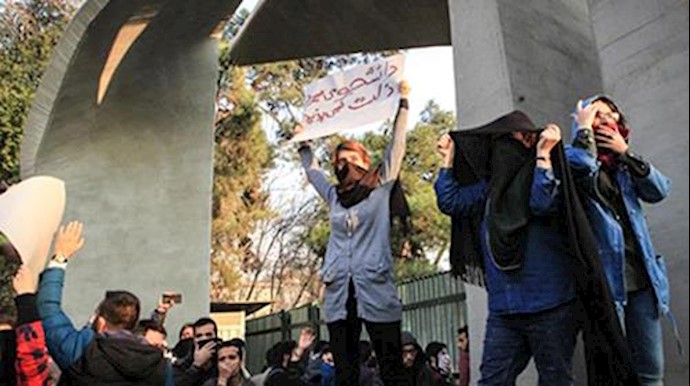By Editorial Board
Washington Post, Jan. 8, 2018 – The popular protests that rocked Iran during the past two weeks probably won’t overturn the dictatorship of Ayatollah Ali Khamenei, but they have proved one point: The 2015 nuclear deal did not stabilize the Islamist regime. Tehran hoped that in agreeing to drastically reduce its stockpile of enriched uranium and restrict its production of nuclear materials for a period of years, it would be able to revive its stricken economy through renewed oil exports and foreign investment. But oil prices have remained relatively low, investment has lagged, and almost three-quarters of Iranians said in a June 2016 poll that they had seen no economic improvement. That disappointment, along with hikes in prices for eggs and other basic products, appears to have triggered the unrest.
President Trump, who labeled the nuclear accord “the worst deal ever,” ought to consider this when he decides this week whether to maintain the suspension of U.S. sanctions, allowing the agreement to survive. Even as the regime struggles economically and is threatened by the resulting unrest, it continues to meet its obligations under the pact, according to the reports of international inspectors. That means there is virtually no chance that Iran will be able to produce a nuclear weapon in the next few years or match North Korea in aspiring to threaten the continental United States.
On the contrary, Iran’s Revolutionary Guard Corps is coming under pressure for its use of precious resources for wars in Syria, Yemen and elsewhere. Demonstrators are shouting slogans against the foreign adventures, which could give an argument to those inside the regime who want to rein them in. In short, it is Iran’s nationalists, not Mr. Trump, who should be calling the nuclear deal a disaster.
That may not remain true down the road. The great weakness of the accord is that it removes restrictions on Iran’s nuclear activities beginning in six years and does not effectively constrain Tehran’s ongoing work on long-range missiles. Eventually the regime will be allowed to produce as much uranium as it wishes with advanced centrifuges — meaning it could assemble a bomb within weeks. The Trump administration is right to worry about that future and to develop a strategy to head it off.
Voiding the deal by reapplying sanctions now, however, would not be a solution. Instead, it would split the United States from its partners in the accord — the European Union, Russia and China — and give Iran an opening to resume nuclear activity immediately. It would also distract from the grievances being raised by Iranian protesters by providing the regime with an external threat, an excuse for further economic failures.
Mr. Trump can ratchet up pressure on the Khamenei regime without inviting these setbacks. He can continue to impose sanctions on entities in and outside Iran involved in missile production as well as those involved in repressing demonstrators. The State Department should also step up funding for technologies that allow Iranians to circumvent the regime’s Internet blockages.
Congress could do Mr. Trump a favor by repealing the legal requirement that he renew the sanctions suspension every 90 days








